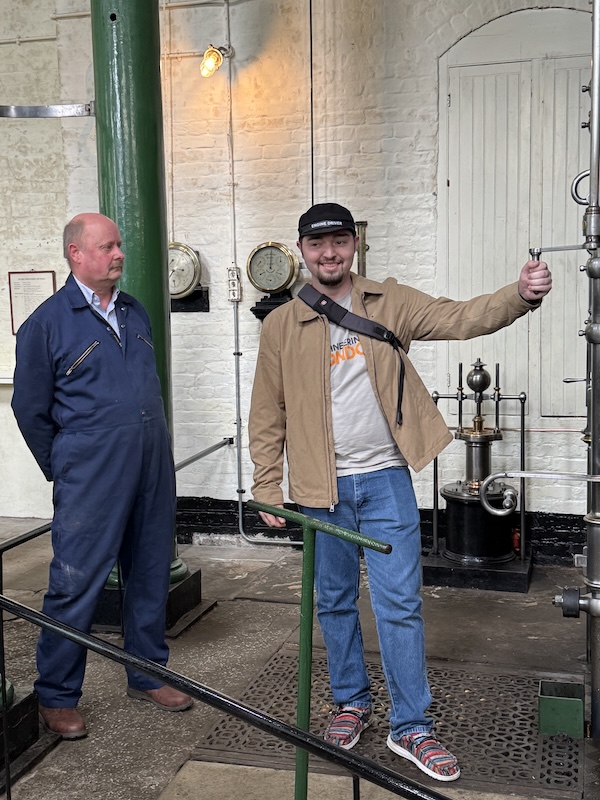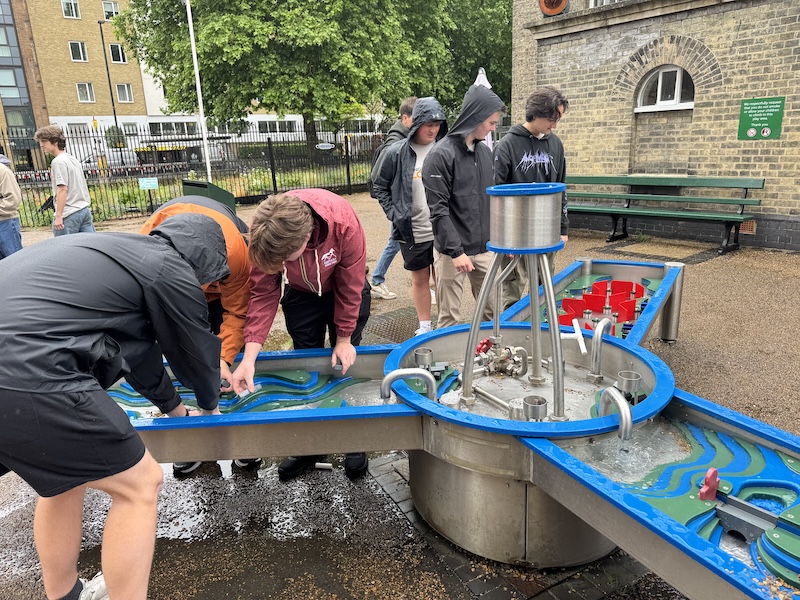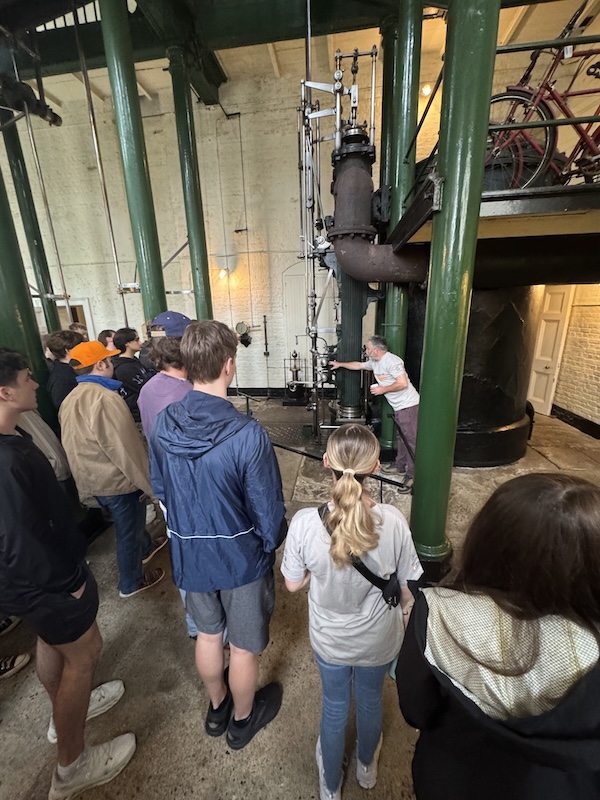On Thursday June 5, the EIL students along with Profs. Berry and Dickerson visited the London Museum of Water and Steam (formerly Kew
Bridge Steam Museum) at Kew Bridge. They witnessed the startup of the
three-story Boulton & Watt engine, the oldest engine on site (built in 1820) and ceased working
in 1943 before being restored to working order in 1975. That engine was built by Boulton & Watt of the Soho Foundry,
Birmingham in 1820, the year after the death of James Watt. In 1848 it
was converted to work on the Cornish cycle, using higher pressure steam. Richard Albanese, chief engineer and our visit's host, allowed one of the EIL students to handle the shutdown of the engine (a first for the EIL program). Richard and his staff also started all four of the large rotative engines in the Steam Hall for the visit. The tour this year also
included the boiler room, tool and parts shop, and the Victorian
(belt-driven) tool
workshop. The students were also shown the 90-inch
Grand Junction Engine (the largest working beam engine in the world) and
the Boulton and Watt engine (built in 1820) that was moved to Kew
Bridge
from the Grand Junction Waterworks Company's Chelsea works in 1840. The
group photo was in front of the Hathorn Davey Triple Expansion Engine in the Steam Hall. That engine was built in Leeds in 1910 by and was previously in service in a pumping station at
Newmarket. It reflects the transition toward internal combustion engines in that the cylinders are inverted and placed in a line directly over the
crankshaft in much the same way as a modern car engine. Before
leaving the Museum, the students competed in an outdoor bubble relay under very windy conditions.





















No comments:
Post a Comment